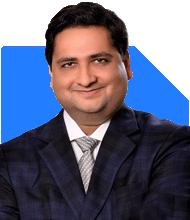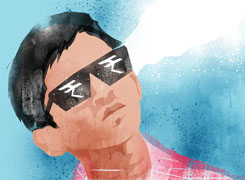Ramalingam Kalirajan |10902 Answers |Ask -Follow
Mutual Funds, Financial Planning Expert - Answered on May 15, 2024
He has an MBA in finance from the University of Madras and is a certified financial planner.
He is the director and chief financial planner at Holistic Investment, a Chennai-based firm that offers financial planning and wealth management advice.... more

I am 48 yrs old l am investing 7k per month in MF from last 2 years. Rs 1000 each in DSP Multi Asset allocation fund. Canara robeco bluechip equity fund. Mirae asset large and midcap fund. Motilal oswal nifty next 50 index fund. Kotak Emerging equity fund. Quant smallcap fund. Parag parikh flexi cap fund. My horizon is 10 yrs.
Diversification is Key
Your portfolio has a good mix of fund types:
Multi-Asset: Provides diversification across asset classes for stability.
Large & Mid-Cap: Offers growth potential with established and growing companies.
Small-Cap: Carries more risk but has the potential for high returns.
Index Fund: Tracks a market index, offering market-related returns.
Actively Managed vs. Index Funds
While your Motilal Oswal Nifty Next 50 is an index fund, your other choices are likely actively managed. These funds have managers who try to outperform the market. This approach can be beneficial, but also carries inherent risks.
10-Year Timeframe Advantage
A 10-year horizon allows you to ride out market ups and downs. Equity funds, though volatile in the short term, have the potential for higher growth over the long term.
Points to Consider:
Overall Asset Allocation: Review the percentage allocation across each fund type to ensure it aligns with your risk tolerance.
Fund Performance: Track the performance of each fund and compare it to its benchmark.
Role of a CFP Professional
A Certified Financial Planner (CFP) professional can offer a more personalized assessment. They can help you:
Analyze Asset Allocation: Ensure your portfolio mix matches your risk tolerance and goals.
Review Fund Performance: Identify any underperforming funds and suggest adjustments.
Rebalance Regularly: Periodically rebalance your portfolio to maintain your desired asset allocation.
Remember:
Market performance can impact your returns. However, your diversified portfolio and long-term focus are positive steps.
Next Steps:
Consider consulting a CFP professional for a detailed portfolio review.
Monitor your fund performance and rebalance as needed.
Keep investing for the long term!
Best Regards,
K. Ramalingam, MBA, CFP,
Chief Financial Planner,
www.holisticinvestment.in
You may like to see similar questions and answers below
Hardik Parikh | Answer |Ask -Follow
Tax, Mutual Fund Expert - Answered on Apr 07, 2023
Vivek Lala |323 Answers |Ask -Follow
Tax, MF Expert - Answered on Oct 09, 2023
Radheshyam Zanwar |6751 Answers |Ask -Follow
MHT-CET, IIT-JEE, NEET-UG Expert - Answered on Dec 19, 2025
Radheshyam Zanwar |6751 Answers |Ask -Follow
MHT-CET, IIT-JEE, NEET-UG Expert - Answered on Dec 19, 2025
Samraat Jadhav |2514 Answers |Ask -Follow
Stock Market Expert - Answered on Dec 18, 2025
Reetika Sharma |432 Answers |Ask -Follow
Financial Planner, MF and Insurance Expert - Answered on Dec 18, 2025
Reetika Sharma |432 Answers |Ask -Follow
Financial Planner, MF and Insurance Expert - Answered on Dec 18, 2025
Reetika Sharma |432 Answers |Ask -Follow
Financial Planner, MF and Insurance Expert - Answered on Dec 18, 2025
Samraat Jadhav |2514 Answers |Ask -Follow
Stock Market Expert - Answered on Dec 18, 2025

Kanchan Rai |648 Answers |Ask -Follow
Relationships Expert, Mind Coach - Answered on Dec 18, 2025
Kanchan Rai |648 Answers |Ask -Follow
Relationships Expert, Mind Coach - Answered on Dec 18, 2025
Anu Krishna |1754 Answers |Ask -Follow
Relationships Expert, Mind Coach - Answered on Dec 18, 2025

























